The quality of the air you breathe directly determines the quality of your life. If you breathe enough polluted air, you can develop respiratory illness, which can literally take years off your life.
So, in order to keep our bodies functioning properly, we all must able to freely and consistently inhale air that is clean. Yet, about six billion people worldwide are breathing dirty, polluted air every day.
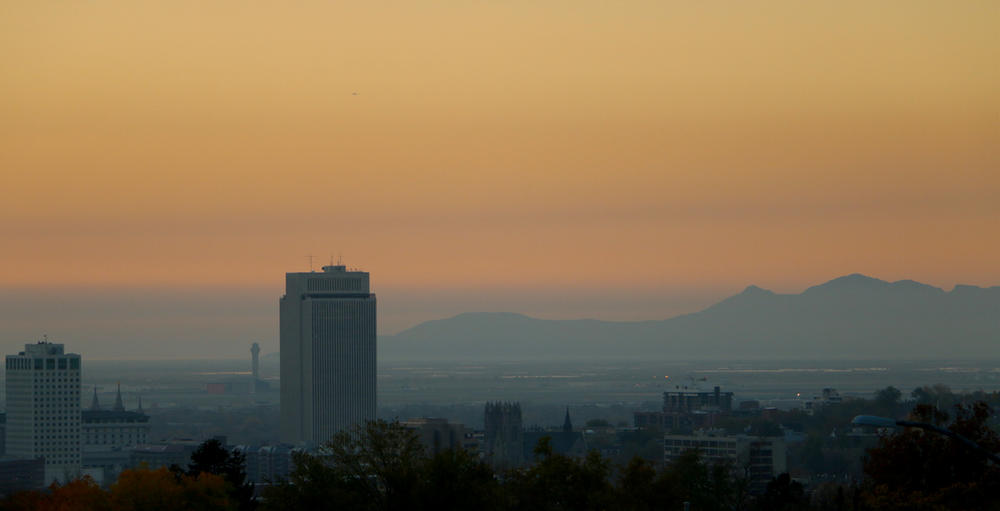
Air pollution is a norm— a fact of life— almost everywhere. But in reality, it is a serious human rights violation. Let’s look at how air quality is measured, how polluted air harms our personal & planetary health, and, most importantly, how we can act to protect our right to breathe safely!
How Do We Measure Air Quality?
Air quality is monitored according to public health standards. In the United States, the Clean Air Act sets regulations for six major air pollutants. The pollutants were chosen because they are known health hazards to the general population.
These pollutants include ground-level ozone, particulate matter, carbon monoxide, lead, sulfur dioxide, and nitrogen. All of these, except for lead, are included in the Air Quality Index, also known as AQI.

AQI is one of the most common measurements of the air quality in a particular region. The AQI’s color-coded system helps us know at a glance if it’s a good idea to be outside, and for how long. The colors also correspond to the air quality flag program in schools and towns.
Ozone and particulate matter are also useful measurements for air quality because they are very common and hazardous to human health. Ozone in the stratosphere acts as a protective layer against the sun’s rays, but at the ground level, ozone can be harmful. Ground-level ozone, or smog, forms through chemical reactions with compounds emitted in the air, usually from cars and trucks. It can trigger many adverse health outcomes.
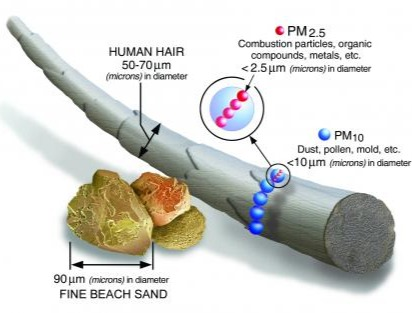
Particulate matter (PM) is especially hazardous because it is so unbelievably tiny. For example, PM2.5 is just 2.5 micrometers in diameter. By comparison, a single human hair is 70 micrometers in diameter— nearly 30 times larger than a PM2.5 particle! This means that PM2.5 can be easily inhaled and absorbed into the body, via the lungs and the bloodstream, and cause adverse health effects.
You can keep yourself protected from bad air by keeping tabs on your area’s air quality and heeding its warnings on bad days. There are several websites where you can check the AQI, ozone, or particulate matter levels in real time. If you live in the United States, check out AirNow. For global air quality, check out IQAir or PurpleAir.
How Does Air Pollution Affect Us?
Air Pollution and Human Health
Whether you are inside your house, walking around outside, or driving somewhere, you’re always breathing, so the quality of the air is constantly important.
Vulnerable populations such as children, elderly adults, or people with respiratory problems or cardiovascular diseases are more sensitive to bad air quality; children, in particular, can develop lifelong health problems. Every year, seven million people die because of bad air quality.

Protect yourself and your loved ones by making a habit of checking your area’s air quality area every day, and keeping an eye out for common symptoms of exposure to bad air. These symptoms can include:
- Coughing
- Throat irritation
- Eye irritation
- Nose irritation
- Airway inflammation
- Chest pain
- Asthma
- Reduced lung function
- Lung cancer
- Newborn babies having health problems (passed on from their exposed mother)
Health Risks Related to Climate Change
Air pollution and climate change go hand in hand. Combustion of fossil fuels releases high emissions of carbon dioxide, along with devastating environmental pollution. Scientists agree: climate change will endanger practically every aspect of life, including our health.
As temperatures increase around the globe, heat-related health disorders will become more common. This includes heat stress, which can induce cardiac arrest. Overall, heat stress can be attributed to thousands of deaths worldwide.
Higher temperatures also increase the formation of ground-level ozone, which worsens air quality. Pollen and particulate matter will also increase due to the changing climate. Overall, respiratory illnesses will likely worsen.
Unfortunately, viruses are also expected to spread more because of climate change. In warmer seasons, hordes of mosquitos move towards more populated areas, bringing transmissible diseases with them. Water-borne illnesses caused by contaminated water will increase because of heavier rainfall brought on by climate change.
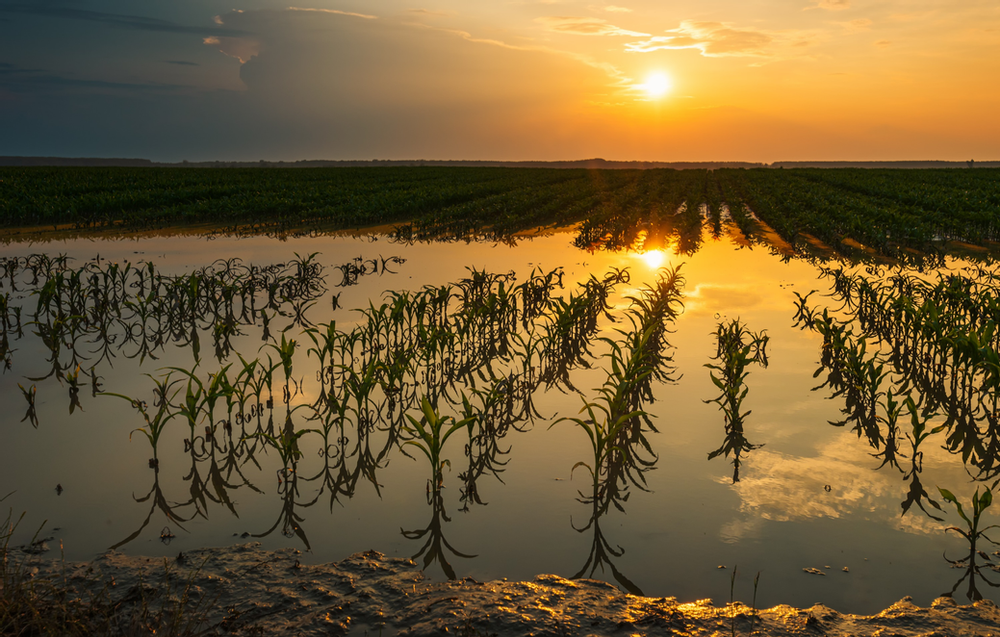
Our food system is also at risk. Crop yields are expected to decrease due to higher temperatures and more unmanageable pests. Millions around the world will be at a higher risk of being malnourished. Populations in the low-income developing world are most likely to be seriously affected.
Why’s Improving Air Quality So Urgent?
Impact of Weather Extremes on Our Health
If we do nothing about air pollution, and by extension, climate change, extreme weather will only become more and more of a problem. Even now, we are already witnessing the increasing severity of natural disasters globally: enormous wildfires have ravaged Australia and the West Coast of the United States; hurricanes are growing stronger and more destructive; and temperature records are being broken, year after year, throughout the world.
And all of these extremes don’t just threaten our physical health. Research shows mental health declines with severe temperature changes. People are at higher risk of hospitalization and death from weather extremes, especially if they already experience mental health struggles such as depression, dementia, schizophrenia, or substance abuse.
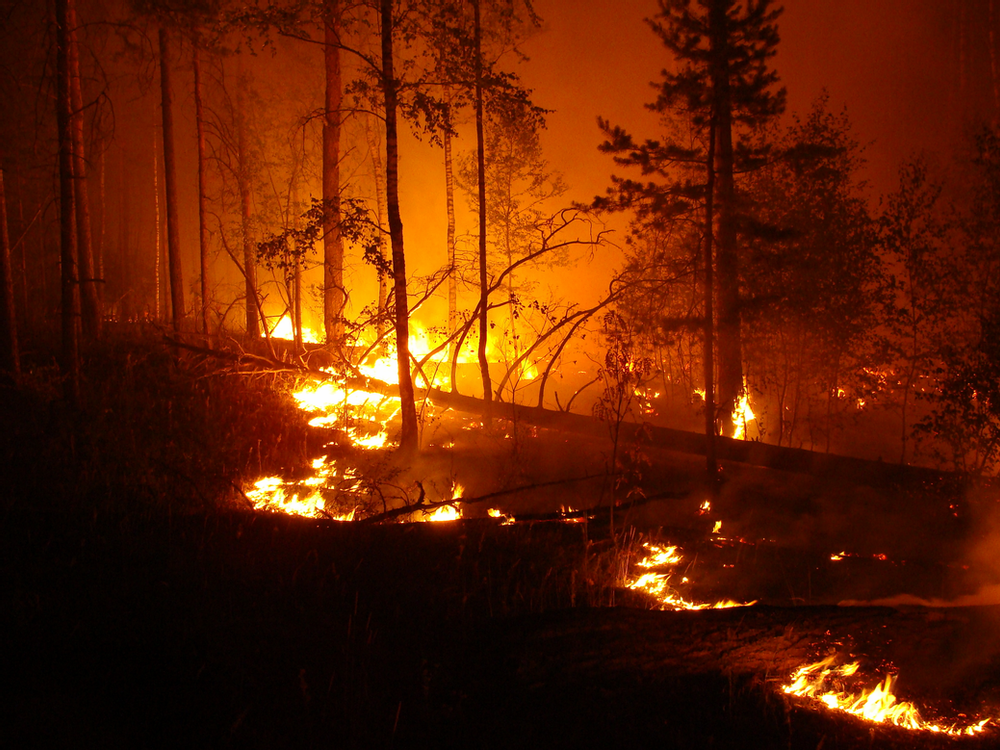
In the aftermath of a natural disaster, serious psychological impacts are widespread. Losing one’s home, family, and friends can be an incredibly devastating, traumatizing experience. Survivors of extreme weather events (such as hurricanes, wildfires, and tsunamis) have higher rates of post-traumatic stress disorder, anxiety, and depression.
Climate refugees around the world will continue to grow in numbers until bold climate action is taken and vulnerable groups are prioritized in these efforts. By 2050, climate change will likely force about 143 million people from Sub-Saharan Africa, South Asia, and Latin America to leave their homes and find somewhere new to live, if they can. Already, in 2017, 22.5 million people had no choice but to migrate because of extreme weather events like flooding, fires, droughts, and intensified storms in their homelands.
Impacts of Pollution on Marginalized Communities
The negative impacts of air pollution are not spread evenly across all populations. In fact, the people who tend to suffer the most from air pollution often have done the least to cause it, and do not have access to adequate resources to protect themselves or change policy. And yet, if all areas were treated equally, air quality would be better for everyone.
In the US, environmental policies have been mainly influenced by white and/or high-income people, thus favoring them and essentially shielding them from air pollution and other environmental ills. By not including other neighborhoods, these exclusionary policies amount to acts of environmental racism; they’ve made it so that countless Black and brown people across the nation have had to deal with the brunt of air pollution and all of its impacts— physiologically, psychologically, socially, economically, politically, and otherwise.
Several Black communities in Louisiana live in a region known as Cancer Alley, named for the high cancer rates associated with local industrial pollution. Native/Indigenous populations are disproportionately affected by oil and gas pollution. Agricultural areas like California’s San Joaquin Valley face pesticide drift and severe poverty.
These communities are the most susceptible to other consequences of environmental destruction, such as infectious diseases. The COVID-19 pandemic has plainly shown that the dangers of respiratory illnesses adversely affect those living in marginalized communities. Black people are dying at much higher rates than the rest of the population (relative to their percentage of the total population)— exposing the preexisting inequities in our healthcare system and policies.
The trend of disproportionate air and environmental pollution exists on a global scale. The world market enables widespread environmental exploitation.
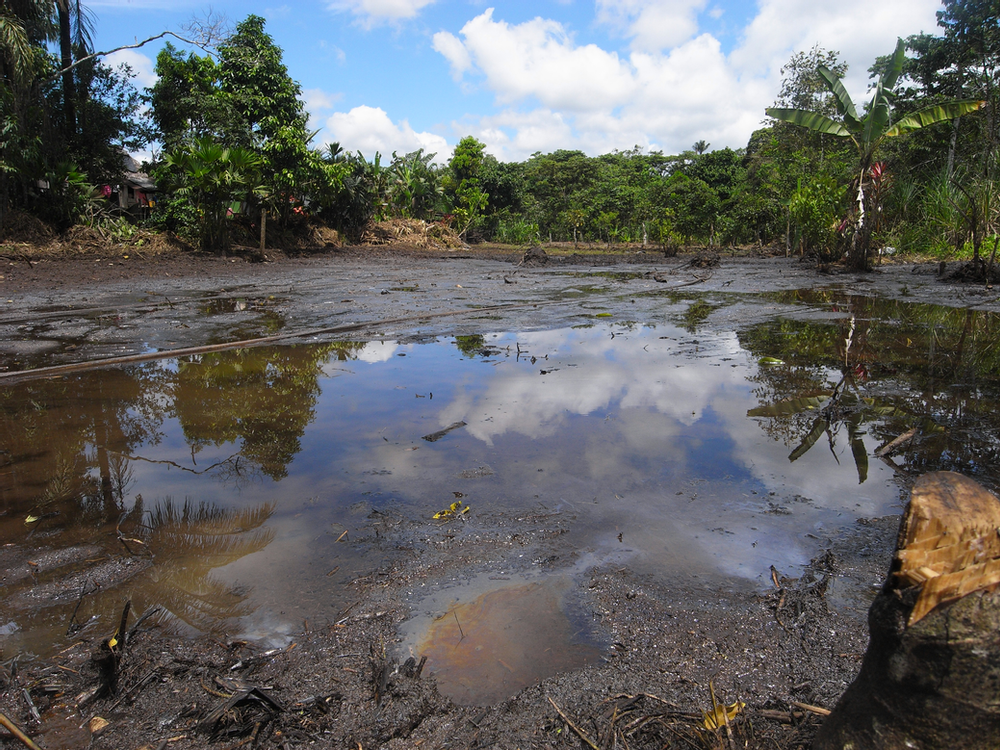
The Chinese government has opened several coal plants in other countries, leaving the people there to deal with the toxic air pollution. Chevron has faced zero accountability for an oil spill in Ecuador that caused birth defects in the local population. A Canadian energy company is planning to open oil drilling in one of the most diverse ecosystems in Botswana.
All of these actions have caused severe, long-lasting harm to local communities and climate change to worsen worldwide.
The worst effects fall on those least responsible for emitting the carbon. Wealthier countries, like the United States, are able to afford climate change mitigation methods. Yet, the countries that are most at risk of sea-level rise, food shortages, or other climatic effects do not have access to a lot of these tools.
Climate and environmental justice have to be at the forefront when tackling these issues. Otherwise, the same systems will continue to exploit and endanger these communities.
(If you’re interested in learning more about environmental justice and the legal cases behind it, check out the EJ Atlas for reports all around the world.)
Air Quality and the Environment, Animals, & Humans
Air pollution is not just isolated to dense urban cities (even if that’s where it often starts, and where the worst of it tends to be concentrated). Air travels like the wind, literally, spreading in different directions across thousands of miles. So when pollutants are released into our air, they end up contaminating entire ecosystems, sometimes very far from their point of origin.
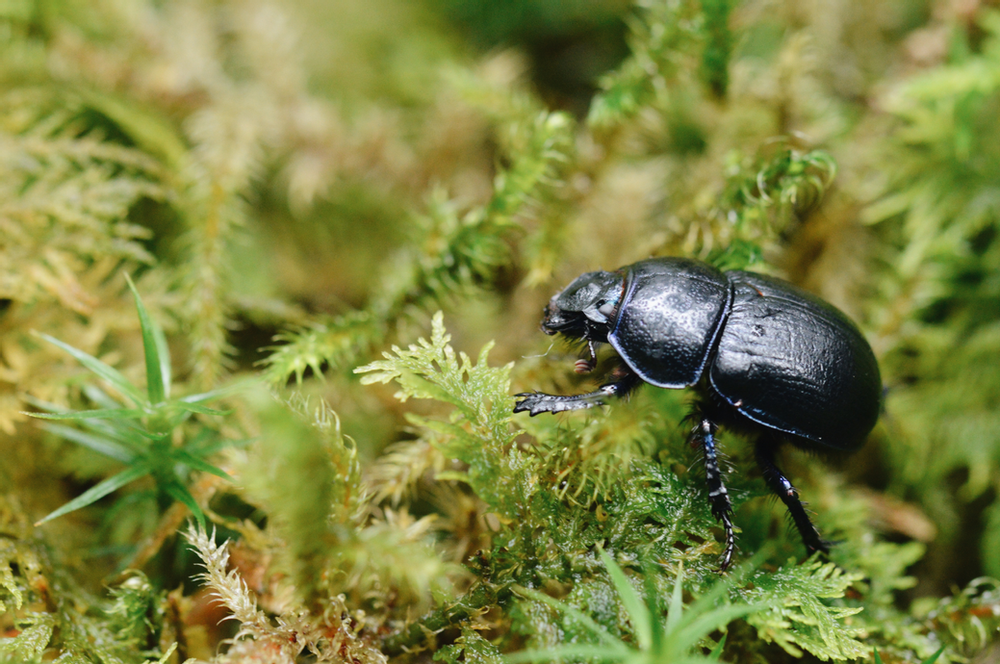
Air toxins inflict harm on all life (not just humans)— from the smallest forest insects, to the big beluga whales in the Arctic Ocean. Excessive CO2 emissions have led to rapid climate change, contributing further to habitat loss and species endangerment or extinction. Other particle pollution, such as pesticides, can contaminate waterways or bioaccumulate in animals’ bodies.
What Can We Do About Air Pollution?
The majority of the world’s emissions come from a relatively small number of big polluting industries. However, we are not powerless to stop air pollution or climate change. There are steps we can take to improve the quality of the air we all breathe.
1) Protect your health.
Bad air quality can feel unavoidable at times, but being informed and taking proper precautions can go a long way. Frequently check your area’s air quality at AirNow, IQAir, or PurpleAir.
If the air quality in your area is bad:
- If possible, stay indoors. Close all windows and doors to limit exposure. Use a fan to stay cool, and avoid activities that can introduce more particulates into your home (smoking; using gas propane or wood-burning stoves; or burning candles). For more advice, check out EPA’s guide on how to reduce indoor exposure.
- If you need to go outside, wearing a mask can help protect your health. N-95 or N-99 masks are recommended for PM2.5 air pollution (for example, PM2.5 is one of the main toxins in wildfire smoke). These masks can limit air intake, so if you have heart or lung problems, ask your doctor before wearing one.
- If you can afford it, invest in a high-quality air filter for your home, or build one yourself.
2) Decrease your own emissions if you can.
While we are not personally responsible for the amount of pollution emitted by industries, we can still do our best to be part of the solutions. Reducing your own energy consumption can reduce air pollution. For example, riding public transit and eating locally can help the planet breathe better. These actions might seem small, but they add up, especially if you encourage friends and family to join you!
3) Advocate for a healthier world.
We all have a voice, and we can use this power to hold industries and our elected officials accountable. Nothing will change unless the people demand it. There are some amazing organizations working on solutions for air quality issues.
- Check out the clean air campaign by the American Lung Association.
- Support investments in public transportation by contacting your elected officials!
- Support a carbon tax that will help slow climate change.
While we all try to live more sustainably on an individual or community basis, we must also demand systemic change. Global problems require global solutions!
